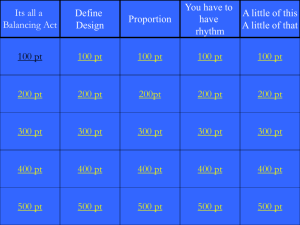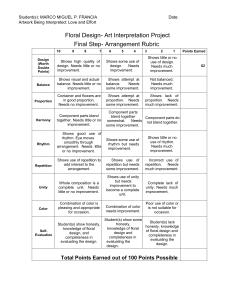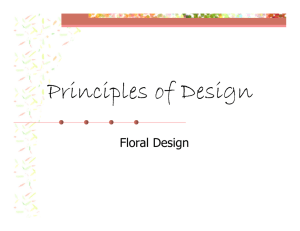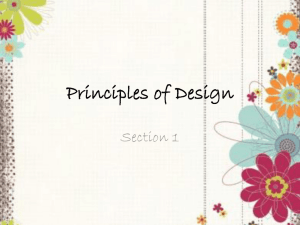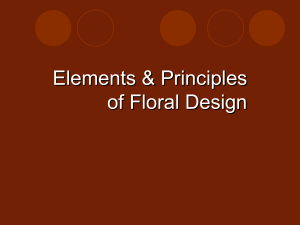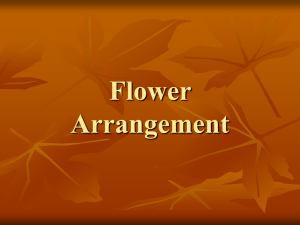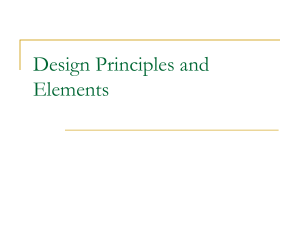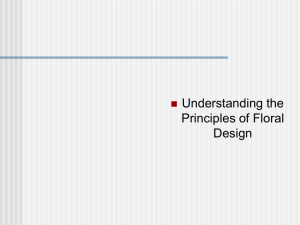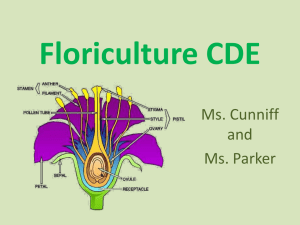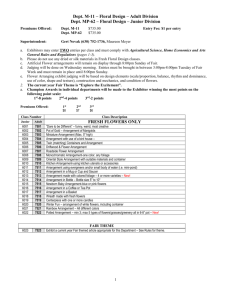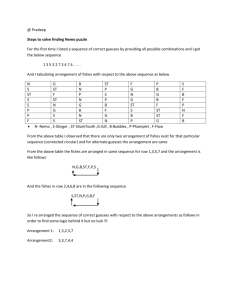Floral Design Principles: Arrangement & Composition
advertisement
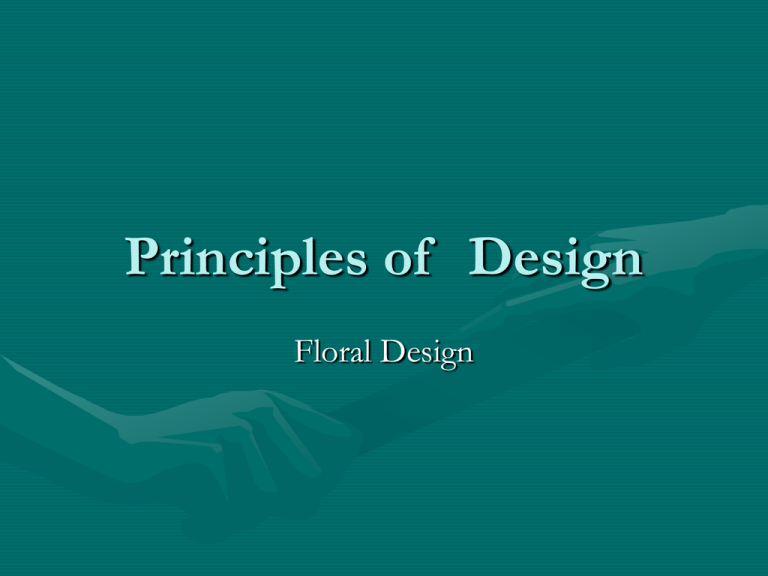
Principles of Design Floral Design The Principles of Design are… • • • • • • • Focal Point Proportion Scale Balance Rhythm Harmony Unity Focal Point • The center of interest in a design • Draws the most attention and directs the viewer’s eye to a specific location within a design. • Located slightly above the rim of the container and extends slightly out in front of the container to give depth. Where is the Focal Point? Proportion • Concerns the relationship between the flowers, foliage, and container. • To attain proper proportion: – Smallest flowers should be positioned at the top and edges of the design and as you work towards the focal point gradually increase the flower size. – Plant material should be 1 ½ to 2 times the size of the container Proportion • Do these arrangements achieve proper proportion? Scale • The relationship between the completed arrangement and its location or surroundings. • Arrangement should “fit in” where it is placed. • Example: A small arrangement on a large table shows improper scale. In Scale or Out of Scale? Balance • Provides an arrangement with the impression of being stable and self-supporting. • Gives “visual weight” to the arrangement and makes it more pleasing to the eye. • Can have symmetrical balance or asymmetrical balance Symmetrical Balance • Formally balanced • Same on each side, appears to be an imaginary vertical line running through the center of the arrangement. • Passive and restful tone Asymmetrical Balance • Informal and more natural design. • The two sides are completely different, but, visual weight appears equal and balanced. Overall Balance • Top to Bottom – The bulk of the weight should on the lower half of the arrangement near the rim of the container to achieve proper balance. • Front to Back – Smooth and gradual flow from the top flower to the bottom outermost flowers. – Tip the top rear flower slightly backward to produce depth and visual balance (flowers toward the top should not lean over the flowers positioned below). Rhythm • The apparent flow of lines, textures, and colors that express a feeling of motion rather than confusion. • Rhythm provides a sense of beauty. • Can be achieved through repetition, radiation, and transition. Achieving Rhythm through Repetition • Accomplished by repeating one or more of the design elements such as color, line, pattern, shape, space, or texture. • Repetition allows the eye to move smoothly from one area to another so the viewer can “see” the entire design. Achieving Rhythm through Radiation • Placing flowers with their stems originating from the focal point so the flowers appear to radiate from the center of the design. Achieving Rhythm through Radiation • Creates emphasis at the center of interest and provides visual movement throughout the arrangement. • Gives strong sense of unity and grace to arrangement. Achieving Rhythm through Transition • Creates a sense of motion within the design that leads the eye to the center of interest. • Produced by repeating similar shapes in a systematic size progression or spacing identical shapes in a systematic space gradiation to achieve transition. Harmony • For harmony to be achieved, all the parts of the design must be blended in a pleasing relationship. • The flower shapes, colors, textures, and sizes should “fit together” to express a central theme or idea. Unity • Achieved when all parts of the design combine w/o noticeable separation. • The arrangement should be a complete unit, not just a group of flowers thrown together.
